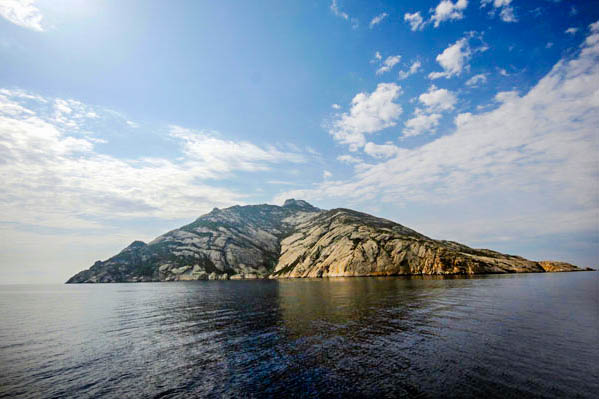One of the treasures of Tuscany is definitely its archipelago consisting of seven islands with uncontaminated beaches. The islands of Tuscany are full of history and legends, and they are a kind of dream for all sea lovers. Legend says that once, seven precious gemstones of Venus’ tiara fell down into the Mediterranean Sea giving rise to the seven islands of Tuscany, seven gems of unique beauty.
The water is crystal clear, green, and blue. They hide tiny bays and beaches, wildlife, Mediterranean scrub vegetation, and amazing sea floors. The archipelago has been declared National Park in 1996, to protect this extraordinary natural environment.
Islands of Tuscany: seven gems of the Sea
Isola d’Elba

Elba Island is the main and biggest of the islands of Tuscany, the third largest Italian island after Sardinia and Sicily. It is in front of the Etruscan Coast and you can reach it by boat from the port of Piombino. It is known all over the world for having hosted the emperor Napoléon Bonaparte in 1814 during his exile. You still can find and visit his villas.
There are nice small hill villages as Capoliveri and Marciana or fisherman towns as Campo nell’Elba or Porto Azzurro. The island is only 87 square miles but you can choose every day different places where enjoy the deep blue water: rocks, white stones beach, golden sandy beach, or the black beach where the sand is dark due to the iron ores.
Isola del Giglio

Giglio Island became famous all over the world in the last few years for Costa Concordia cruise shipwreck. Luckily today the wreck has been removed and the island is back to its normality. It is an oasis of wildlife and nature. The Mediterranean scrub, olive oil trees, vineyards, a coast broken by granite rocks, and hidden bays conquer all visitors. The three villages of the islands are Giglio Porto with the small harbor, the ancient medieval hamlet of Giglio Castello, and Campese with the largest sandy beach.
Pianosa

Pianosa takes its name from its shape. It is completely flat. It has been a penal colony for 142 years. Today only a few convicts on part-time detection live here, working on renovating some buildings, growing olive oil trees, wheat, and barley. It is not possible to sail close to the coast, so the island is like a nursery for fish flora. Every day, during the summer, a boat for Pianosa departs from the port of Marina di Campo in Elba Island.
Giannutri

Giannutri has the shape of a bow, god’s favorite object. It has been known since the Roman Empire age when few noble families decided to spend here their vacation to rest and retreat. Today you find the rest of these times in the archeological site of the island. It is all privately owned, there are no hotels or camping, you can visit it only with a guided tour.
Montecristo

Montecristo is the scenery of the novel of betrayal and revenge of The Count of Monte Cristo, Alexandre Dumas’s classic. Unfortunately, the island is a paradise just for a few. After being declared a natural reserve, Montecristo is uninhabited. Two watchmen live there, taking turns. Then, only a thousand tourists per year can visit the island with the authorization of the State Forestry Corps.
Capraia

Capraia takes its name from the wild goats that used to live here. It is the only volcano island in the Archipelago. Closer to Corse in France than to Italy, it strikes for the color of volcano rocks, i.e. Cala Rossa. You can still admire the rest of the Roman settlements and of an old penal colony. The few beaches are made up of rocks and you can dive off into green and crystal clear water.
Gorgona

Gorgona is the smallest of the seven islands of Tuscany. It hosts a penal colony and if you wish to visit it you must get the permission of the authority or get a guided tour (and you cannot bring your smartphone or camera with you because pictures are not allowed). The island is mostly rocky, covered with Mediterranean scrub. Sailing around the island is forbidden, so the water is clear and unpolluted and deserves a bath.
How to reach the seven Islands of Tuscany
You can reach Elba from the port of Piombino, Giglio, and Giannutri from the port of Santo Stefano on the Monte Argentario peninsula and Capraia from the port of Livorno. To visit the other islands you have to reserve a guided tour because self-guided tours are not allowed.
